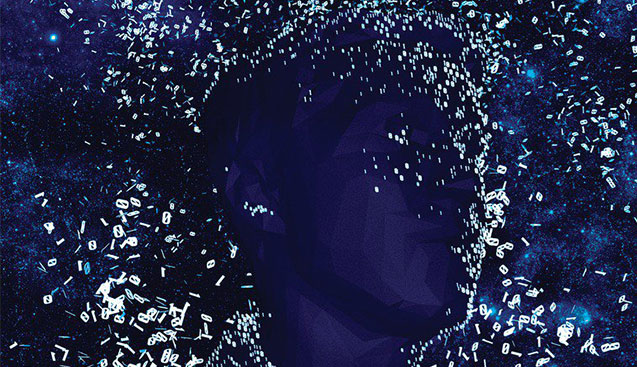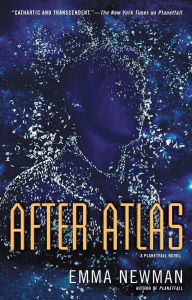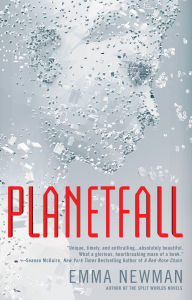After Atlas Is Painfully Good Science Fiction
 Emma Newman’s Planetfall is a devastating novel, set among a colony of pilgrims who left Earth to find God on another planet. Set 20 years after the Atlas mission landed, it details the idyllic lives of the missionaries, who while away their days at the edge of an incomprehensible alien structure. They live post-scarcity lives, with every physical need provided for by 3D printers. But theirs is a colony built on a terrible lie, and the novel is a slow uncovering, peeling back the years to the titular landing, excavating the rotten foundations of a seemingly perfect society. The finale is a series of body blows that left me winded and strangling, and Newman has knocked me out again with After Atlas, a standalone companion novel set before and alongside the events of Planetfall, which this blog named one of the very best science fiction novels of 2015.
Emma Newman’s Planetfall is a devastating novel, set among a colony of pilgrims who left Earth to find God on another planet. Set 20 years after the Atlas mission landed, it details the idyllic lives of the missionaries, who while away their days at the edge of an incomprehensible alien structure. They live post-scarcity lives, with every physical need provided for by 3D printers. But theirs is a colony built on a terrible lie, and the novel is a slow uncovering, peeling back the years to the titular landing, excavating the rotten foundations of a seemingly perfect society. The finale is a series of body blows that left me winded and strangling, and Newman has knocked me out again with After Atlas, a standalone companion novel set before and alongside the events of Planetfall, which this blog named one of the very best science fiction novels of 2015.
After Atlas
After Atlas
By Emma Newman
In Stock Online
Paperback $22.00
Fourty years ago, Detective Carlos Moreno was left behind by his mother, who chose a pilgrimage to the stars over her husband and infant son. She left him behind on an inhospitable Earth, in a broken society where all pretense of democracy has been subsumed under the gov-corps. Subsequently declared a nonperson, Carlos was sold to a conditioning center, then bought by the Noropean (roughly the Scandinavian countries and England) Ministry of Justice. He lives as a slave, more or less, 20 years into a 50-year contract that keeps getting longer and longer with each minor mistake or human indulgence.
He’s called in by a superior officer to investigate the death of Alejandro Casales, the leader of a religious cult called the Circle. Alejandro took Carlos and his father in after his father’s grief-fueled breakdown when his wife left on the Atlas, instilling Carlos in the Circle’s suspicion of the hyper-connectivity and 3D-printed ease of modern life. Members of the Circle grew their own food and removed the chips that are required in order to interface with the ubiquitous technology and surveillance around them. Though Carlos abandoned almost all of the teachings of Alejandro and the Circle, he adds days, weeks, and months onto his already long contract to make and consume food not printed in a printer, but grown in the dark earth.
Carlos’s feelings toward Alejandro, his father, and the Circle are complex and murky, and the murder investigation unsettles his equilibrium. Though the investigation itself is something of a red herring—it seems obvious what happened in that hotel room, whether Carlos wants to accept it or not—the motivations behind those bloody events are anything but clear. Carlos play the flatfoot, doggedly working his way through blind alleys, hassled by three gov-corps, each with its own unfathomable motivations. As is often the case with detective novels, the mostly illusory and tenuous control Carlos has over his life begins to spin away from him, slowly at first, and then with increasing speed.
Fourty years ago, Detective Carlos Moreno was left behind by his mother, who chose a pilgrimage to the stars over her husband and infant son. She left him behind on an inhospitable Earth, in a broken society where all pretense of democracy has been subsumed under the gov-corps. Subsequently declared a nonperson, Carlos was sold to a conditioning center, then bought by the Noropean (roughly the Scandinavian countries and England) Ministry of Justice. He lives as a slave, more or less, 20 years into a 50-year contract that keeps getting longer and longer with each minor mistake or human indulgence.
He’s called in by a superior officer to investigate the death of Alejandro Casales, the leader of a religious cult called the Circle. Alejandro took Carlos and his father in after his father’s grief-fueled breakdown when his wife left on the Atlas, instilling Carlos in the Circle’s suspicion of the hyper-connectivity and 3D-printed ease of modern life. Members of the Circle grew their own food and removed the chips that are required in order to interface with the ubiquitous technology and surveillance around them. Though Carlos abandoned almost all of the teachings of Alejandro and the Circle, he adds days, weeks, and months onto his already long contract to make and consume food not printed in a printer, but grown in the dark earth.
Carlos’s feelings toward Alejandro, his father, and the Circle are complex and murky, and the murder investigation unsettles his equilibrium. Though the investigation itself is something of a red herring—it seems obvious what happened in that hotel room, whether Carlos wants to accept it or not—the motivations behind those bloody events are anything but clear. Carlos play the flatfoot, doggedly working his way through blind alleys, hassled by three gov-corps, each with its own unfathomable motivations. As is often the case with detective novels, the mostly illusory and tenuous control Carlos has over his life begins to spin away from him, slowly at first, and then with increasing speed.
Planetfall
Planetfall
By Emma Newman
In Stock Online
Paperback $22.00
Taken together, the Planetfall novels recall Margaret Atwood’s MaddAddam trilogy, which starts with a personal account of the apocalypse in Oryx and Crake, and rewinds to a time before that ending in The Year of the Flood to detail what led up to it. Like The Year of the Flood, After Atlas concerns itself with earth-worshiping ascetics who live in a technological world of fading green and lost habitat. That’s not to say Newman’s style and concerns are anything like Atwood’s; it’s more I got the same tight feeling in my lungs while reading. Both books lead us along dark and darkening paths, with stories that start with simple lives and peel back the surface layers to reveal the messy, inevitable complexity. After Atlas follows the same timeline as Planetfall, but exists worlds apart, its principles connected by what seem at first the most tenuous lines of blood and loss. But, in the end, it’s not so tenuous after all.
Braced like I was after the sucker punch experience of Planetfall, I thought I was prepared for the ending of After Atlas. I know Newman’s tricks, I thought. And yet she again manages a third act turn that left me wrung out and horrified. Phew, I thought, at least that’s over with. But she’s got another one in store for you, one you can’t see coming, though it has been there all along. I cannot wait for what might come next, though I know it’s going to be dark and twisting—these are fiercely human portraits of people living in inhumane times. They make me shudder. They are a wonder to behold.
After Atlas is available November 8.
Taken together, the Planetfall novels recall Margaret Atwood’s MaddAddam trilogy, which starts with a personal account of the apocalypse in Oryx and Crake, and rewinds to a time before that ending in The Year of the Flood to detail what led up to it. Like The Year of the Flood, After Atlas concerns itself with earth-worshiping ascetics who live in a technological world of fading green and lost habitat. That’s not to say Newman’s style and concerns are anything like Atwood’s; it’s more I got the same tight feeling in my lungs while reading. Both books lead us along dark and darkening paths, with stories that start with simple lives and peel back the surface layers to reveal the messy, inevitable complexity. After Atlas follows the same timeline as Planetfall, but exists worlds apart, its principles connected by what seem at first the most tenuous lines of blood and loss. But, in the end, it’s not so tenuous after all.
Braced like I was after the sucker punch experience of Planetfall, I thought I was prepared for the ending of After Atlas. I know Newman’s tricks, I thought. And yet she again manages a third act turn that left me wrung out and horrified. Phew, I thought, at least that’s over with. But she’s got another one in store for you, one you can’t see coming, though it has been there all along. I cannot wait for what might come next, though I know it’s going to be dark and twisting—these are fiercely human portraits of people living in inhumane times. They make me shudder. They are a wonder to behold.
After Atlas is available November 8.

